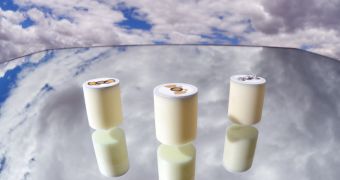Scientists at the US Department of Energy's (DOE) Sandia National Laboratories (SNL) say that they were recently able to complete the development of a new type of small sensor, which could come in handy for numerous practical applications.
These include sampling gas contents and concentrations above battlefields or heavily industrialized areas, as well as improving point-of-contact medicine. Experts also believe that the sensors could come in handy for refining our knowledge of Earth's climate.
The novel sensor is an air sampler no larger than an earplug, which can be produced for a very small price. The instrument can be used easily, but can collect relevant data on a wide array of parameters related to understanding the atmosphere.
Scientists hope to use datasets obtained with the help of these advanced sensors in order to improve existing computer models seeking to predict how global warming and climate change will affect the world in the coming decades.
“We now have an inexpensive tool for collecting pristine vapor samples in the field,” SNL expert and lead study author, Ron Manginell, explains. A paper detailing the findings appears in the latest issue of the scientific journal Review of Scientific Instruments, as a cover story.
The new devices meet the most stringent technical requirements, since they are not of a contaminating nature. They are made up of a microvalve located above a sample chamber. The microvalve is made up of a kind of solder, a commonly used alloy.
When heated, this material melts and flows, and goes on to block the hole connecting the sample chamber to the exterior. When the alloy is cooled, it solidifies into an impenetrable block that prevents anything from getting in and out of the chamber.
The sensors could be useful in a wide variety of climate studies conducted by agencies, such as NASA and the National Oceanic and Atmospheric Administration (NOAA). At this point, these organizations are using various cumbersome techniques to collect and analyze sample data.
“It’s hard to build a mass spectrometer to go down a 2-inch diameter borehole. We’ve proposed instead to use our miniature samplers outfitted with microvalves to take samples that can be transported pristinely back to the surface and then examined in a lab,” Manginell explains.
“What we need to build next is a normally closed version of the valve that opens when we want it to,” he concludes.

 14 DAY TRIAL //
14 DAY TRIAL //